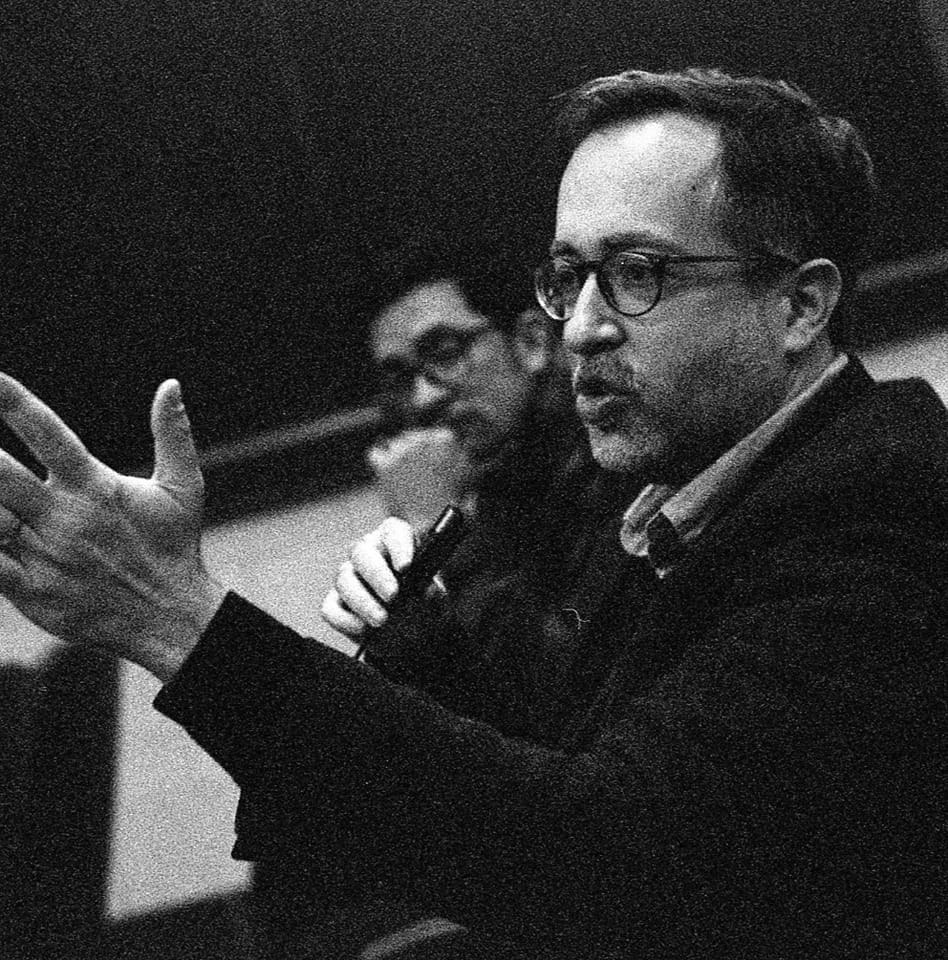In this post, Nir Ben-Moshe discusses his article recently published in Ergo. The full-length version of Nir’s article can be found here.

Some sentimentalists, inspired by Adam Smith’s moral philosophy, have tried to establish a strong normative connection between one’s own perspective and the perspectives of others, as a way of showing that one is reciprocally bound to, and ought to be engaged with, one’s fellow human beings (Debes 2012; Stueber 2017; Fleischacker 2019).
I understand the connection via Christine Korsgaard’s claim that
“valuing humanity in your own person [. . .] implies, entails, or involves valuing it in that of others” (Korsgaard 1996: 132)
Based on Smith’s moral philosophy, I offer a sentimentalist defense of a version of the Korsgaardian claim: my valuing my own humanity, my unique perspective, entails my valuing your humanity, your unique perspective.
Following Samuel Fleischacker (2019: 31), the conception of humanity that I develop builds on the notion of perspective at the heart of Smith’s account of sympathy.
Smith has an account of sympathy based on imaginative projection, according to which we use our imagination in order to place ourselves in another actor’s situation (TMS I.i.1.2).
“[Sympathy] does not arise so much from the view of the passion, as from that of the situation which excites it” (TMS I.i.1.10)
This account pays special attention to an agent’s perspective on the situation, including the causes of their passions:
“The first question which we ask is, What has befallen you? Till this be answered, […] our fellow-feeling is not very considerable” (TMS I.i.1.9).
I associate humanity with having a unique perspective and being aware of this perspective. More specifically, a human being is the type of being that is aware, qua spectator, of its own unique perspective, qua actor.
The main argument of the paper relies on three components of Smith’s moral theory.
The first component is the impartial spectator, which Smith understands as the standpoint of a person in general, a neutral point of view. This standpoint humbles our self-love and makes us appreciate that our perspective is but one of a multitude and in no respect better than any other. From this standpoint, Smith argues, we take into account the perspectives and interests of all concerned.
The second component is the normative status of other-oriented sympathy. When discussing sympathy early in TMS, Smith focuses on imagining being oneself in another actor’s situation (self-oriented sympathy). However, later in TMS, Smith focuses on imagining being another actor in that actor’s situation (other-oriented sympathy). I make the case that Smith thought that other-oriented sympathy is the proper form of sympathy. The key idea is that the appropriate form of sympathy to experience from a neutral point of view is a form of sympathy that is not influenced by self-love.
The third component is the desire for mutual sympathy with others: people are pleased when others sympathize with them and when they are able to sympathize with others.
In order to appreciate the importance of these three components of Smith’s thought, I make use of a distinction that Nagel (1986: 170) draws between recognizing a perspective and occupying it.
The standpoint of the impartial spectator is a standpoint from which I recognize that all perspectives have equal worth: adopting it makes me appreciate that my own perspective is no more privileged than—indeed, is equal to—other people’s perspectives; it tells me that insofar as my perspective is worthy of recognition, your perspective is worthy of recognition, too.
However, this type of recognition would merely show me that your perspective has normative force for you in the same way in which my perspective has normative force for me; it would not show, in and of itself, that your perspective has normative force for me. This is so because, while the recognition of equality necessitates consistency, this consistency can be attained by recognizing that each perspective has normative force for its author; it does not necessitate my engagement with your perspective.
This is where other-oriented sympathy, as the proper form of sympathy, has a crucial role to play: the impartial spectator requires me to see the situation from your perspective rather than my own; it requires me, that is, to try to occupy your perspective, and not merely recognize it.
This requirement to occupy someone else’s perspective does not come about ex nihilo, but rather builds on the aforementioned third component, namely, the desire for mutual sympathy with others. According to Smith, the desire for mutual sympathy leads to a process in which we constantly imagine being in the other person’s situation and augment our sympathy so as to match the experiences of the actor; this process, in turn, leads people to construct a rudimentary internal spectator, albeit one that is just averaged out from the perspectives of the people that we have encountered. When the impartial spectator is constructed, he reaffirms the sympathetic efforts to see the situation from others’ perspectives, giving normative authority to other-oriented sympathy.
The combination of being required to both recognize and occupy your perspective means that your perspective has normative force for me in the following way. Insofar as I value my perspective as a unique perspective, I am required to engage with your perspective and consider it from the inside—I am required to attempt to sympathize with you in your person and character in the same way in which I, qua spectator, sympathize with myself, qua actor, in my own person and character—while also recognizing that your perspective has equal standing to my own.
By doing so, your perspective, which is equal in standing to, but different in content from, mine, demands a rational response from me, thereby making your perspective normative for me. Therefore, the proposed Smithian account shows that my valuing my own humanity, my unique perspective, entails my valuing your humanity, your unique perspective.
Want more?
Read the full article at https://journals.publishing.umich.edu/ergo/article/id/4662/.
References
- Debes, Remy (2012). “Adam Smith on Dignity and Equality”. British Journal for the History of Philosophy, 20(1), 109–40.
- Fleischacker, Samuel (2019). Being Me Being You: Adam Smith & Empathy. University of Chicago Press.
- Korsgaard, Christine M. (1996). The Sources of Normativity. Onora O’Neill (Ed.). Cambridge University Press.
- Nagel, Thomas (1986). The View from Nowhere. Oxford University Press.
- Smith, Adam (1976). The Theory of Moral Sentiments [TMS]. D. D. Raphael and A. L. Macfie (Eds.). Liberty Fund.
- Stueber, Karsten R. (2017). “Smithian Constructivism: Elucidating the Reality of the Normative Domain”. In Remy Debes and Karsten R. Stueber (Eds.), Ethical Sentimentalism: New Perspectives (192–209). Cambridge University Press.
About the author

Nir Ben-Moshe is Associate Professor in the Department of Philosophy and Health Innovation Professor in the Carle Illinois College of Medicine at the University of Illinois Urbana-Champaign. His research falls primarily into two areas. The first area lies at the intersection of contemporary moral philosophy and 18th-century moral philosophy. The second area is biomedical ethics. He is currently working on a book entitled Idealization and the Moral Point of View: An Adam Smithian Account of Moral Reasons.